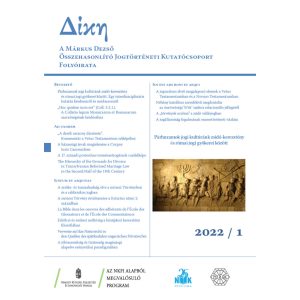Szerző: Herger Csabáné
Pécsi Tudományegyetem Állam- és Jogtudományi Kar
Az eredeti nyelvű leírás hiányzik.
*****
The history of the development of the matrimonial law is a particularly useful tool for researching and comparing the biblical and Roman law roots of European legal culture. In Western Christianity, the (essential elements of) canonical marriage law had been unified by the second decade of the 13th century. However, the Protestant movements that developed in the first half of the 16th century and their denominational marriage law system led to further fragmentation, which has essentially continued to the present day, notwithstanding the fact that the rise of civil marriage and the secularisation of the law of dissolution in the 19th and 20th centuries meant that denominational marriage law no longer had any civil legal force. The most appropriate method for a historical comparison of Protestant ecclesiastical marriage law is to first consider the doctrines of the founders of the dominant movements on the institution of marriage, focusing on the differences that constituted a breaking point in relation to medieval canon law on marriage. In the Protestant regions of Europe, hundreds of secular (state, provincial and municipal) laws on the marriage law had already been enacted by the 16th century, and their common feature, in addition to the theological background mentioned above, was that they drew on biblical and Roman legal roots, while retaining elements of traditional customary law. In this overview, I will first introduce the Protestant understanding of the virtues of marriage through the example of Martin Luther and Jean Calvin, and then examine how the generation of natural law scholars who followed them, notably Hugo Grotius and John Selden, thought about the marriage bond on this basis.
A részletes adatlapot a képre vagy a címre kattintva érheti el.
Ingyenesen letölthető, open access kiadvány.
















